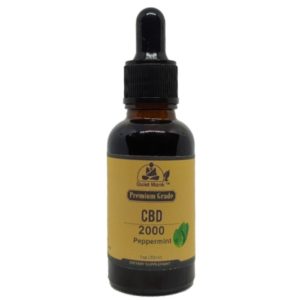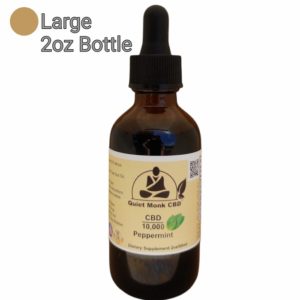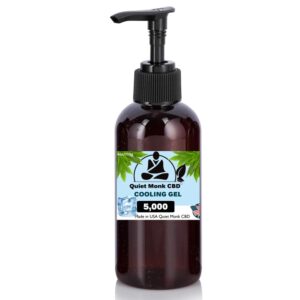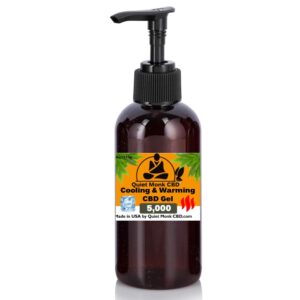
Osteoarthritis, also known as degenerative joint disease, is a chronic condition that affects millions of people worldwide. It is a degenerative disease that causes the cartilage between bones to break down, leading to pain, stiffness, and swelling in the joints. While there is no cure for osteoarthritis, there are traditional treatments available to manage its symptoms.
Traditional treatments for osteoarthritis often include medication, physical therapy, and injections. However, these methods may not work for everyone, and some may experience unpleasant side effects. This is where CBD, or cannabidiol, comes in as a potential alternative for pain management in osteoarthritis.
CBD is a compound derived from the cannabis plant that has gained popularity in recent years for its potential health benefits. It is not psychoactive, meaning it does not produce a “high” like THC, another compound found in cannabis. Instead, it interacts with the body’s endocannabinoid system to provide various therapeutic effects.
CBD may help with osteoarthritis pain by reducing inflammation and alleviating pain. It can also improve sleep, which is often disrupted by the discomfort of osteoarthritis. Additionally, CBD is available in various forms, making it accessible and convenient for individuals to try.
Some possible forms of CBD for osteoarthritis include:
- CBD topical cream and CBD gel
- oral CBD tincture supplements
- transdermal patches
These products can be found in various strengths and formulations to suit different needs.
While CBD may have potential benefits for osteoarthritis pain management, it is essential to be aware of possible side effects. These may include dry mouth, reduced appetite, and fatigue. It is crucial to consult with a doctor before using CBD and start with a low dosage to assess tolerance and monitor for any adverse reactions.
In conclusion, CBD may be a viable alternative for osteoarthritis pain management. However, more research is needed in this area to fully understand its effectiveness and potential side effects. As with any alternative treatment, it is important to consult with a healthcare professional before use.
Key Takeaways:
CBD can be used as an alternative pain management for osteoarthritis due to its ability to reduce inflammation, alleviate pain, and improve sleep. There are various forms of CBD available for osteoarthritis, including topical creams, oral supplements, and transdermal patches. Before using CBD for osteoarthritis, it is important to consult with a doctor, start with a low dosage, and monitor for any potential side effects.
What is Osteoarthritis?
Osteoarthritis is a debilitating joint disease that impacts a large population worldwide. It is characterized by the deterioration of cartilage in the joints, resulting in discomfort, rigidity, and limited mobility. This condition typically affects joints that bear weight, such as the knees, hips, and spine.
Osteoarthritis can be caused by various factors including aging, genetics, obesity, joint injuries, and repetitive movements. It is crucial to effectively manage osteoarthritis by implementing lifestyle changes, undergoing physical therapy, taking pain medications, and exploring alternative treatments like CBD, which has shown potential in reducing inflammation and relieving pain associated with the condition.
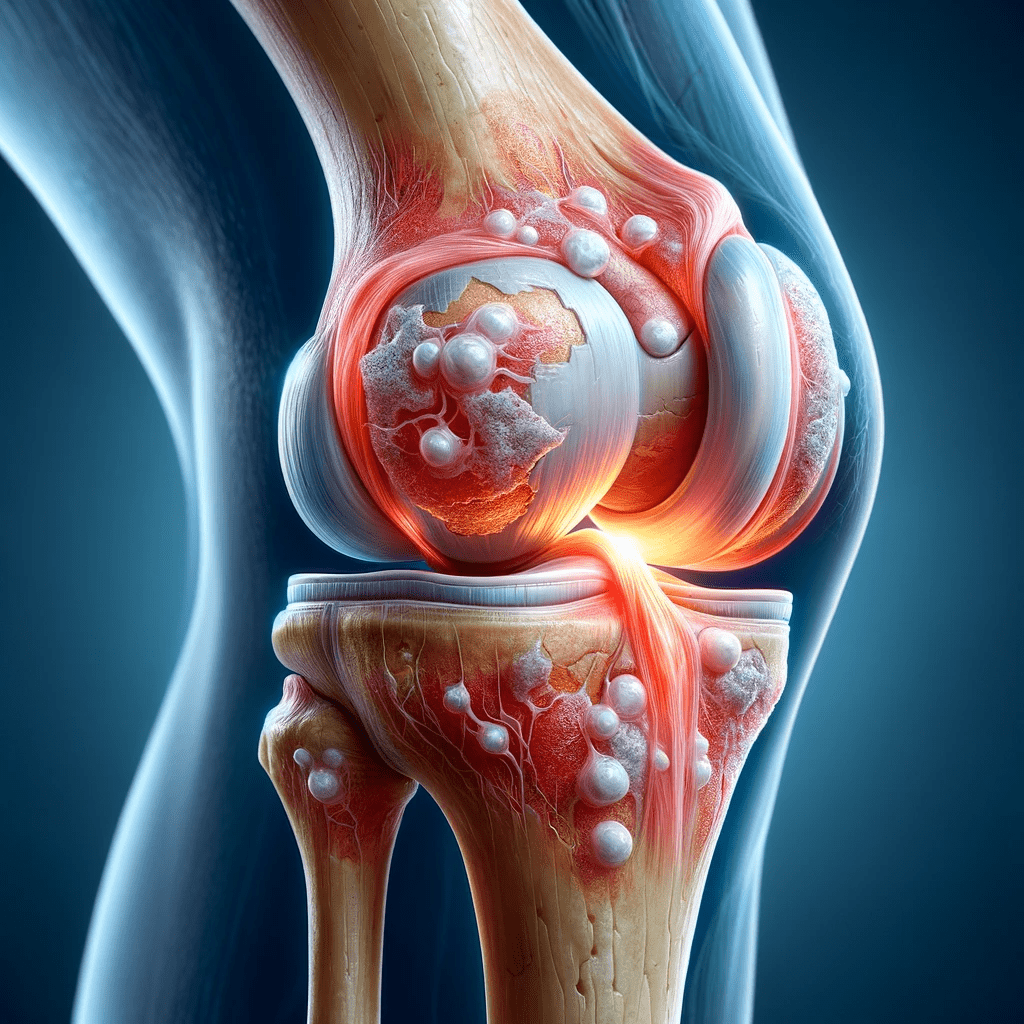
What are the Traditional Treatments for Osteoarthritis?
Osteoarthritis is a common degenerative joint disease that affects millions of people worldwide. While there are traditional treatments available, such as medications, physical therapy, and injections, they may come with unwanted side effects and limitations. In this section, we will discuss the various traditional treatments for osteoarthritis and their pros and cons. Understanding these treatments will provide a foundation for exploring the use of CBD as an alternative pain management option for this condition.
1. Medications
Medications are often utilized in the management of osteoarthritis to alleviate pain and decrease inflammation. When using medications for osteoarthritis, it is important to follow these steps:
- Consult with a doctor to determine the most appropriate medication for your specific condition and needs.
- Begin with a low dosage and gradually increase if needed, under medical supervision.
- Monitor for any potential side effects, such as gastrointestinal issues or allergic reactions.
- Adhere to the prescribed dosage and frequency of medication intake.
- Consider combining medications with other treatment options, such as physical therapy or lifestyle modifications, for optimal results.
- Regularly communicate with your doctor to assess the effectiveness of the medication and make any necessary adjustments.
2. Physical Therapy
Physical therapy is a vital component in the management of osteoarthritis pain and improvement of joint function. Follow these steps for effective physical therapy:
- Consult with a physical therapist to create a personalized treatment plan.
- Engage in strengthening exercises to improve muscle support around the affected joints.
- Participate in flexibility exercises to enhance joint mobility.
- Practice low-impact aerobic activities, such as swimming or cycling, to maintain cardiovascular health.
- Utilize assistive devices, like braces or splints, to reduce stress on the joints.
Sarah, a 55-year-old woman with knee osteoarthritis, experienced relief through physical therapy. By diligently following her therapist’s exercises, she noticed a decrease in pain, an increase in mobility, and a renewed sense of independence. Physical therapy played a crucial role in Sarah’s journey towards managing her osteoarthritis pain.
3. Injections
Injections can be a highly effective treatment option for managing pain caused by osteoarthritis. If you are considering injections, here are some steps to follow:
- Schedule an appointment with a healthcare professional who specializes in treating osteoarthritis.
- Discuss the various types of injections that are available, such as corticosteroid injections or hyaluronic acid injections.
- Carefully consider the potential benefits and risks associated with each type of injection.
- Select the most appropriate injection based on your specific condition and symptoms.
- Follow any pre-injection instructions provided by your healthcare professional to prepare for the procedure.
- During the injection, try to remain still and relaxed to minimize any discomfort.
- After the injection, follow any post-injection care instructions provided by your healthcare professional.
Pro-tip: Communication with your healthcare professional is key. Be open about your pain levels and any concerns you may have to ensure that the injections are tailored to your individual needs for optimal pain management.
What is CBD?
CBD, short for cannabidiol, is a natural compound derived from the cannabis plant. It has been used for its potential therapeutic benefits and is non-intoxicating. CBD interacts with the body’s endocannabinoid system, which helps regulate various bodily functions like pain, inflammation, and mood. While it is believed to have anti-inflammatory and analgesic properties, more research is needed to fully understand its effectiveness and safety for specific medical conditions.
Before incorporating CBD into your pain management routine, it is important to consult with a healthcare professional. They can provide guidance on safe and effective use, as well as potential drug interactions. Consider factors such as quality, dosage, and third-party lab testing when choosing CBD products. Start with a low dosage and gradually increase as needed, monitoring its effects on your symptoms. Be cautious of any potential interactions between CBD and other medications you may be taking.
According to This Study Published 2022 Aug 24
According to a study Published online 2022 Aug 24: CBD use was associated with improvements in pain (83%), physical function (66%), and sleep quality (66%). Subgroup analysis by diagnosis type (osteoarthritis, rheumatoid, or other autoimmune arthritis) found improvements among groups for physical function (P=0.013), favoring the osteoarthritis group. https://pubmed.ncbi.nlm.nih.gov/35999581/
How Can CBD Help with Osteoarthritis Pain?
Osteoarthritis is a common and debilitating condition that affects millions of people worldwide. While traditional pain management methods can be effective, more and more individuals are turning to CBD as an alternative treatment. In this section, we will explore how CBD can help with osteoarthritis pain. We will discuss its anti-inflammatory properties and how it can alleviate pain, as well as how it can improve sleep for those suffering from this condition.
1. Reduces Inflammation
One of the main ways CBD can be beneficial for osteoarthritis pain is by reducing inflammation.
- Select a high-quality CBD product from a reputable brand.
- Start with a low dosage and gradually increase it if necessary.
- Consistency is key – take CBD regularly to fully experience its benefits.
- Monitor your body’s response and adjust the dosage as needed.
- Consult with a healthcare professional for personalized guidance.
For instance, Mary, a 50-year-old woman with osteoarthritis, experienced relief from joint pain and swelling after incorporating CBD oil into her daily routine for two weeks. She noticed a significant decrease in inflammation, allowing her to resume daily activities with ease.
2. Alleviates Pain
Using CBD can help alleviate pain associated with osteoarthritis. Here are steps to effectively use CBD for pain relief:
- Consult with a doctor to ensure CBD is suitable for your condition and won’t interact with any medications.
- Start with a low dosage and gradually increase if needed, following product instructions. This natural alternative has shown promise in reducing pain and inflammation for individuals with osteoarthritis.
- Monitor for any side effects like drowsiness or dry mouth and adjust dosage accordingly to effectively alleviate pain.
3. Improves Sleep
Using CBD for osteoarthritis pain management can provide benefits for improving sleep quality. Follow these steps to incorporate CBD into your routine and experience better sleep:
- Consult with a doctor to determine the appropriate dosage and method of CBD consumption.
- Start with a low dosage and gradually increase if necessary.
- Monitor for any potential side effects, such as drowsiness or changes in appetite.
By adding CBD to your osteoarthritis pain management plan, you may see improvements in your sleep, leading to better overall well-being.

What are the Different Forms of CBD for Osteoarthritis?
As the use of CBD for pain management becomes increasingly popular, it’s important to understand the different forms it can come in. For those suffering from osteoarthritis, CBD can be a promising alternative to traditional pain medications. In this section, we will discuss the various forms of CBD that are available for managing osteoarthritis symptoms. From topical creams and lotions to oral supplements and transdermal patches, each form offers unique benefits and may be more suitable for different individuals. Let’s dive into the differences between these forms and how they can be used to alleviate pain caused by osteoarthritis.
1. Topical Creams and Lotions
Topical creams and lotions can be effective for managing osteoarthritis pain. Here are some steps to consider when using them:
- Clean the affected area before applying the topical cream or lotion.
- Gently massage a small amount onto the painful joint.
- Follow the instructions on the product for frequency of application.
- Allow the cream or lotion to fully absorb into the skin before covering the area with clothing.
- For optimal results, continue using the topical treatment regularly.
Pro-tip: For comprehensive pain management, consider combining the use of topical creams and lotions with other treatments such as physical therapy or oral supplements.
2. Oral Supplements
Oral supplements are a popular form of CBD for osteoarthritis. Here are the steps to consider when using
- Consult with a doctor to determine the appropriate dosage and ensure it won’t interact with any medications you’re currently taking.
- Start with a low dosage and gradually increase as needed, allowing your body to adjust.
- Monitor for any potential side effects, such as drowsiness or changes in appetite.
Remember, everyone’s experience with CBD may vary, so it’s important to find what works best for you.
3. Transdermal Patches
Transdermal CBD patches are a convenient and effective way to use CBD for osteoarthritis pain relief. Here are the steps to using transdermal patches:
- Choose a reputable brand that offers CBD transdermal patches.
- Clean and dry the area of skin where you plan to apply the transdermal patch.
- Remove the protective backing from the patch and firmly place it on the skin.
- Press down on the patch to ensure it adheres well.
- Leave the patch on for the recommended duration specified by the manufacturer.
- After removing the patch, dispose of it properly.
- Gently massage the area to help the CBD absorb into the skin.
- Remember to wash your hands after handling the transdermal patch.
What are the Possible Side Effects of Using CBD for Osteoarthritis?
When using CBD for osteoarthritis, it is important to be aware of potential side effects. While CBD is generally well-tolerated, some individuals may experience adverse reactions such as fatigue, dry mouth, diarrhea, and changes in appetite or weight. It is important to remember that these side effects are usually mild and temporary. However, it is always recommended to consult with a healthcare professional before incorporating CBD into your osteoarthritis treatment plan.
Pro-tip: To minimize potential side effects, start with a low dosage of CBD and gradually increase as needed while closely monitoring your body’s response.
How to Use CBD for Osteoarthritis?
CBD has gained popularity as a natural alternative for managing pain, including for those with osteoarthritis. But how exactly should one use CBD for this condition? In this section, we will discuss the recommended steps for incorporating CBD into your osteoarthritis treatment plan. First, we will stress the importance of consulting with a doctor before starting CBD. Then, we will cover the suggested starting dosage and the process of gradually increasing it. Finally, we will touch upon the need to monitor for any potential side effects while using CBD for osteoarthritis.
1. Consult with a Doctor

If you are considering using CBD as an alternative for managing osteoarthritis pain, it is crucial to consult with a doctor first to determine if it is safe and appropriate for your specific situation.
- Discuss your symptoms and medical history with your doctor.
- Seek their professional advice on whether CBD is suitable for you.
- Inform your doctor of any other medications or supplements you are taking.
- Ask about potential interactions or contraindications.
- Follow your doctor’s recommendations for dosage and administration.
2. Start with a Low Dosage
- Begin by using a low dosage of CBD for managing osteoarthritis pain.
- It is important to consult with a healthcare professional to determine the appropriate starting dosage.
- If necessary, gradually increase the dosage based on an individual’s response and pain levels.
- Be sure to monitor for any side effects or adverse reactions.
- Keeping a record of the dosage and its effects can help track progress.
- Adjust the dosage as needed to achieve optimal pain relief.
- Remember that everyone’s response to CBD may vary, so personalized dosing is crucial.
3. Monitor for Any Side Effects
- When using CBD for osteoarthritis, it is important to keep an eye out for any potential side effects.
- Record any changes or reactions you experience after starting CBD.
- Be aware of possible side effects such as drowsiness, dry mouth, changes in appetite, or gastrointestinal issues.
- If you notice any concerning or persistent side effects, it is best to consult with your doctor.
- It is also important to monitor for any interactions between CBD and other medications you may be taking.
- Regularly assess your pain levels and overall well-being to determine the effectiveness of CBD for managing your osteoarthritis.


